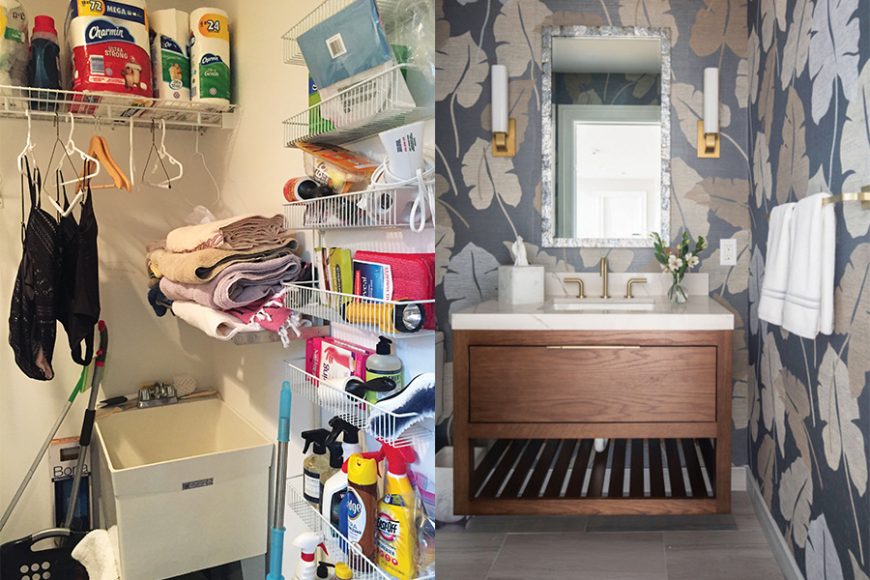Design is not merely decorative. Designers are influenced by many things. But the spark of creating is often started by the need to solve a problem.
Designers have the ability to think in innovative ways and to see situations differently and provide solutions. Designers are responsible for almost everything we do and touch today. There are product designers who create everything in our lives from fashion, furniture, fabric, cars, household tools, phones and computers.
Many are overlooked because the items they design are not so glamorous but they are important to making our daily lives easier.
As an interior designer, clients not only come to me to design a beautiful space for them but often to solve a design problem. An awkward, poorly functioning kitchen or living space needs to be addressed before you can begin to decorate.
Finding storage solutions in small spaces is a function that often needs to be solved. How do we make these spaces beautiful and functional? Many times thinking outside the box and looking at creating design solutions from a different perspective takes the living space to another level.
For example, a client had a laundry room next to her family room on the first floor, but she really needed a powder room. We moved the laundry to an unused office off the master bedroom and put in a delightful, spacious powder room in its place. Not only did we create a beautiful room, but we solved the problem of needing a powder room on the first floor.
To start solving these problems I start by asking what are the end goals for this space. Who is going to use the space? What feeling should the space evoke? How does the client like to live? Are there storage concerns, do the clients entertain a lot? Who lives in the house? Are there pets? What colors do they like?
Often the space is influenced by the architecture; is it modern, traditional, transitional? Can we push the architecture into a more modern look? Sometimes it’s the complete opposite, can we bring a space back to its original bones and then build on that? Once we determine the groundwork we can set the parameters and then build upon that foundation to create the home that you really love living in.
When visiting homes, I am often surprised at the selections that were made. Poorly scaled furniture and carpets, artwork not hung correctly, lack of window treatments or poorly made ones, bland paint colors and fabrics. All of this adds up to uncomfortable living. We feel better in beautiful surroundings that function.
As a designer I am influenced by my surroundings, travel, art, architecture, gardens, nature and other designers who work in different mediums. A professor once said to me, “Everything that you learn no matter how unrelated to your career can be processed and distilled into your own personal work and over time something that you learned long ago can be applied to a current problem-solving situation.” I did not quite understand that at 18, but I certainly understand that now.
Inspiration is abstract. That concept is often the springboard for my work. When I am starting a new project so many ideas start to pour into my creative process and occupy my thoughts as I sift through various creative solutions. Sometimes the solutions are not practical, but this tangle of thoughts and ideas bounce around for a while before I even start to sketch out the options. When that spark and clarity hits the practical and beautiful then the design falls into place. It is a complex process to explain but talking with other designers that spark and inspiration is a huge part of the design process.
Some influential women designers and artists include: architect and artist Maya Lin; architect Zaha Hadid; furniture and product designers Ray Eames and Florence Knoll; jewelry designer Paloma Picasso; and fashion designers Coco Chanel and Miuccia Prada. All of these women created many beautiful objects and not only made or make life decorative but functional.
We often don’t realize that the everyday objects we use were often designed by designers who thought about how we were going to use that product. And how it could be made to be both functional and beautiful. All of us should live life beautifully. Take the time to add well-designed beauty to your surroundings and life. It doesn’t necessarily mean huge costs to do that. It could be as simple as garden-picked flowers in a beautiful vase on a kitchen table.
For more, visit camidesigns.com.

